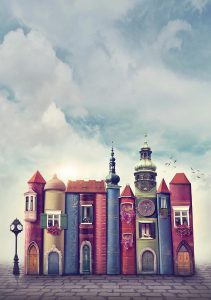 From my early beginnings as a young introvert, the public library has always been a bit of a refuge. Years later, not much has changed, albeit with an additional affinity for endless hours spent scouring second-hand bookstores to add to my ever-growing “to-read” pile.
From my early beginnings as a young introvert, the public library has always been a bit of a refuge. Years later, not much has changed, albeit with an additional affinity for endless hours spent scouring second-hand bookstores to add to my ever-growing “to-read” pile.
From one bookworm to another, this column will be underscoring and outlining various literary genres, authors, and recent reads and can serve as an introduction for those unfamiliar with these works, as a refresher for long-time aficionados, and maybe as an inspiration for readers to share their own suggested topics. Do you have a topic that you would like covered in this column? Feel free to contact me for an interview and a feature in an upcoming column.
Who
This column serves as an introduction to the novels of Leo Tolstoy, a reminder of some of the author’s classics, and as an inspiration for further reading.
Born August 28, 1828 in Yasnaya Polyana, in the Russian Empire, Tolstoy was a Russian realistic fiction author. Realistic fiction can be defined as a “genre consisting of stories that could have actually occurred to people . . . in a believable setting.” In particular, it “resemble[s] real life, and fictional characters within these stories react similarly to real people.” Other examples of realistic fiction include Ivan Turgenev’s Fathers and Sons.
Authors similar to Tolstoy include 19-century Russian authors covered in a previous column, such as Fyodor Dostoevsky, author of Crime and Punishment and The Brothers Karamazov and Aleksandr Solzhenitsyn, author of Gulag Archipelago and One Day in the Life of Ivan Denisovich. Readers may also enjoy the works of Anton Chekov and Alexander Pushkin.
What
Some well-known Tolstoy novels include Anna Karenina and War and Peace.
Avid readers may recognize the now-famous quote, ““All happy families resemble each other; each unhappy family is unhappy in its own way,” from Tolstoy’s Anna Karenina.
Other popular works include the novellas, The Death of Ivan Ilyich and The Kreutzer Sonata. Readers may also be interested in the novel Resurrection, Tolstoy’s last.
Where
Many of these novels and novellas are set throughout the Russian Empire, including St. Petersburg.
When
These works often take place during the 19th century.
Why
The works of Tolstoy may be of interest to learners who would like to consider philosophical topics, such as ethics and existentialism, in addition to religious thoughts and ideas, such as redemption and conscience. In addition, Tolstoy’s works may be of interest for students who would like to learn more about Russian history.
How
AU’s wide range of diverse courses make it easy to study this topic in depth. Courses related to Leo Tolstoy are available in a variety of disciplines, including one’s that may fit into your Degree Works. (Always check with an AU counsellor to see if these particular courses fulfill your personal graduation requirements!)
AU students interested in learning more about this topic may enroll in HIST 327: Imperial Russia, a senior-level, three-credit course, which “explores violence, coercion, religion, gender, ethnicity, and identity as means of expanding, unifying, and modernizing the Russian empire.” The course also “looks in detail at the reigns and accomplishments of the most important Romanovs, ranging from Peter I the Great to Nicholas II.” Topics, include “Patriarchy in Practice: The Russian Empire Through a Gendered Lens,” “Patriarchy in Practice: The Russian Empire Through a Gendered Lens,” and “Religion, Ethnicity, and Identity Building in the Age of Nationalism,” among others. (No prerequisites are needed to enroll in this course.)
In addition, students may also be interested in PHIL 231: Introduction to Philosophy: West and East, a junior-level, three-credit course, which “introduces students to philosophical debate over some of the most fundamental questions humanity has encountered and continues to encounter.” (No prerequisites are required.) Happy reading!
